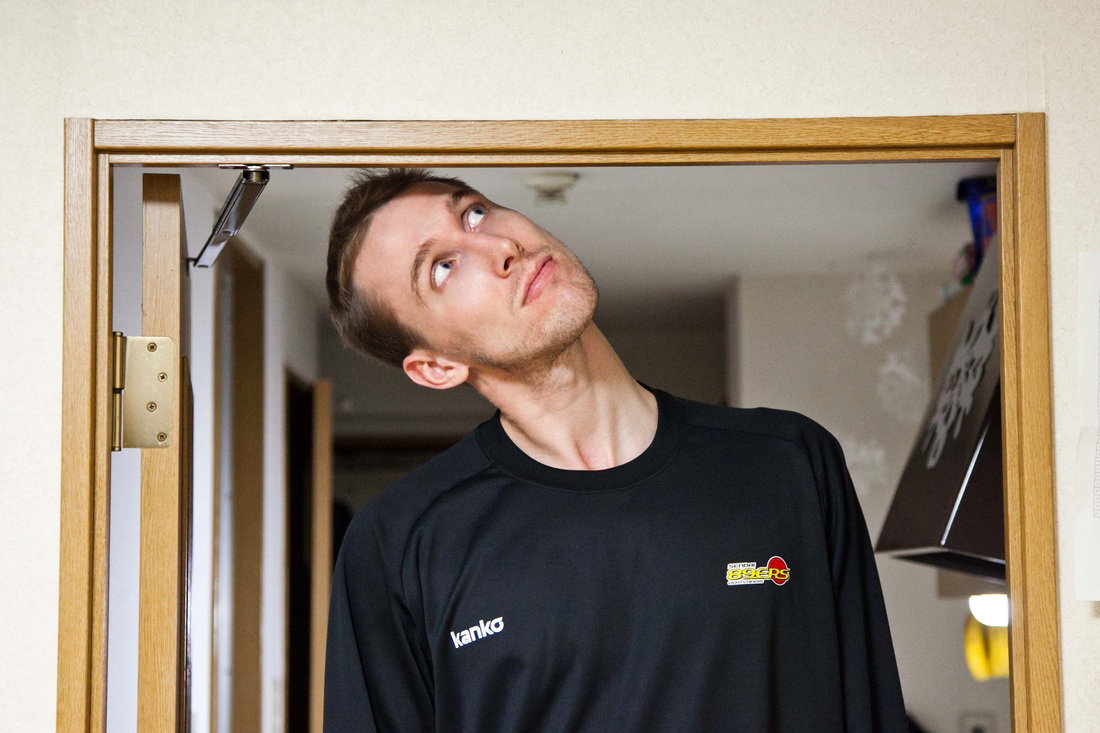 |
| Prior to basketball, his height simply gave him neck cramps |
We all know and love Charles "the Big D" Darwin, who quite obviously changed the face of evolution forever with his theory of evolution by natural selection, but let's review a few of Darwin's assertions about his then-controversial theory:
1) Evolution is a two-stage process with random variation as the raw material and natural selection as the directing force.
 |
| Bowties don't lie |
Goldschmidt admitted that the majority of these macromutations would be disastrous and lethal to the organism. These he called "monsters." But, Goldschmidt believed, in the right conditions eventually a macromutation would occur that could be beneficial for an organism. This mutation would adapt an organism successfully to a new niche in life, which he referred to as a "Hopeful Monster." His early research in embryology supported his hypothesis that new species will occur by the rare success of these hopeful monsters and not by an accumulation of small changes within a population.
Many Neo-Darwinians rejected Goldschmidt's hypothesis and for years it was the butt of genetic research jokes. Critics linked the phrase "hopeful monster" to the non-Darwinian notions of immediate perfection by dramatic genetic change. People said macromutations would be too harmful, a hopeful monster would never survive. And, most importantly, said the critics, if by chance one hopeful monster survives, how the hell would it find a mate?!
 |
| Oh, we dunno. They seem to be doing alright for themselves. |
 |
| The Axoltl is famously the only salamander with PARTY TIME gills. |
 |
| Kangaroo rats: such cute little monsters |
Geomyidae or Heteromyidae families, who have an external, fur-lined pouch. Charles A. Long studied these pouches for years, considered a vast array of preadaptive possibilities for the external pouch but rejected them all in favor of discontinuous transition, aka a hopeful monster: external mouse jowels were just a thing, until suddenly they were THE thing... adaptationally speaking at least.
And finally, we end with a quote from fellow scientist and friend Don Prothero that wonderfully sums up the current debate surrounding the Hopeful Monster hypothesis:
"The past twenty years have vindicated Goldschmidt to some degree. With the discovery of the importance of regulatory genes, we realize that he was ahead of his time in focusing on the importance of a few genes controlling big changes in the organisms, not small-scales changes in the entire genome as neo-Darwinians thought. In addition, the hopeful monster problem is not so insurmountable after all. Embryology has shown that if you affect an entire population of developing embryos with a stress (such as a heat shock) it can cause many embryos to go through the same new pathway of embryonic development, and then they all become hopeful monsters when they reach reproductive age" - Prothero, 2007So why all this chat about hopeful monsters? Well, it's an interesting hypothesis, and one that has caught the attention of scientists in a lot of different fields.... and the attention of our favorite paleoartist, Ray Troll, who has given us permission to display some of his brand new art about Hopeful Monsters. Ray first heard about the hopeful monster hypothesis from the University of Oregon's very own Dr. Samantha Hopkins when he visited back in 2012. This isn't the first time Sam has inspired paleoart, remember Meaghan's horny rodents? And the mention of Hopeful Monsters caught the attention of the imaginative Troll, who started daydreaming about these hopeful monsters soon after. Where did they come from? Were they so ugly they were cute? And most importantly, was that a face only a mother could love? We present to you the NEVER BEFORE SEEN artistic result of this scientific curiosity: Hopeful Monsters by Ray Troll
We are proud to debut Ray Troll's new paleo art here at Mary Anning's Revenge and we hope that you the viewer enjoy getting the exclusive first look. All we ask in return is a little information: WOULD YOU LIKE THIS DESIGN ON A T-SHIRT??? That is the question that Troll and the Vengeance Team are discussing at the moment and we need your opinion. Are there enough paleonerds out there to justify the printing costs? LET US KNOW!! Please tell us if you'd like to see this print available on a t-shirt via the comments on this post, you can email us at maryanningwritesback@gmail.com OR let us know on our Facebook page.
Works Cited
Bowler, Peter J. Evolution: the history of an idea. Univ of California Press, 1989.
Jablonka, Eva, and Marion J. Lamb. "Epigenetic inheritance and evolution."The Lamarckian Dimension (1995).
Gould, Stephen Jay. "The return of hopeful monsters." Natural history 86.6 (1977): 22-30.
Lane, Nick. Power, sex, suicide: mitochondria and the meaning of life. Oxford University Press, 2005.
Long, Charles A. "Evolution of mammalian cheek pouches and a possibly discontinuous origin of a higher taxon (Geomyoidea)." American Naturalist(1976): 1093-1097.
Page, Robert B., et al. "Microarray analysis of a salamander hopeful monster reveals transcriptional signatures of paedomorphic brain development." BMC evolutionary biology 10.1 (2010): 199.
Prothero, Donald R. Evolution: What the fossils say and why it matters. Columbia University Press, 2007.
Theißen, Günter. "Saltational evolution: hopeful monsters are here to stay."Theory in Biosciences 128.1 (2009): 43-51.
----------


No comments:
Post a Comment